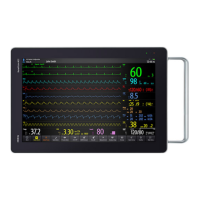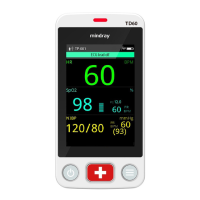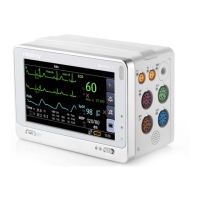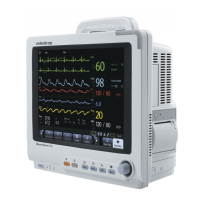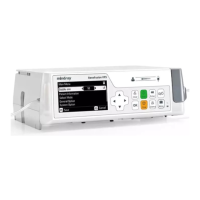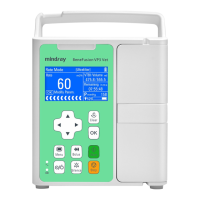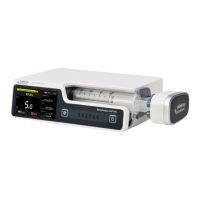7 - 22 BeneVision N1 Patient Monitor Operator’s Manual
2. Select Relearn.
• Initiate ECG relearning only during periods of predominantly normal rhythm and when the ECG
signal is relatively noise-free. If ECG learning takes place during arrhythmias, the ectopic beats may
be incorrectly learned as normal QRS complexes. This may result in missed detection of subsequent
arrhythmia events.
7.10 Defibrillation Synchronization Pulse Output
The 12-lead N1 provides an analog out connector to output synchronization pulses for defibrillators. If a
defibrillator is connected, it receives a synchronization pulse (100 ms, +5 V) through the analog out connector
each time an R-wave is detected. The 3/5/6 lead N1 monitor does not offer this output.
• According to IEC 60601-2-4: 2010, the peak of the synchronized defibrillator discharge should be
delivered within 60 ms of the peak of the R wave. The signal at the ECG output (sync pulse) on the
monitor is delayed by maximum of 30 ms. the biomedical engineer should verify that the ECG/
Defibrillator combination does not exceed recommended maximum delay of 60 ms.
• Before defibrillation, ensure that both defibrillator and monitor have passed the system test and
can be safely used together.
7.11 ECG Troubleshooting
This section lists some of the problems that might be encountered during ECG monitoring. If you encounter
problems when using the monitor or accessories, check the table below before requesting for services. If the
problem persists after you have taken corrective actions, contact the service personnel.
• For the physiological and technical alarm messages, see Appendix DAlarm Messages.
Problem Corrective Actions
Noisy ECG traces 1. Check that the electrodes are not detached or dry. Replace with fresh
and moist electrodes if necessary.
2. Check that leadwires are not defective. Replace leadwires if necessary.
3. Check that the patient cable or leadwires are not routed too close to
other electrical devices. Move the patient cable or leadwires away from
electrical devices and their cables if necessary.
Excessive electrosurgical Interference Use ESU-proof ECG cables. For more information, see
25.1ECG Accessories.
Muscle Noise Inadequate skin preparation, tremors, tense subject, and/or poor electrode
placement.
1. Perform skin preparation again and re-place the electrodes. For more
information, see
7.4.1Preparing the Patient Skin and 7.4.2Applying
Electrodes and Connecting the Patient
.
2. Apply fresh, moist electrodes. Avoid muscular areas.
Intermittent Signal 1. Check that cables are properly connected.
2. Check that electrodes are not detached or dry. Perform skin preparation
again as described in
7.4.1Preparing the Patient Skin and apply fresh and
moist electrodes.
3. Check that the patient cable or leadwires are not damaged. Change
them if necessary.

